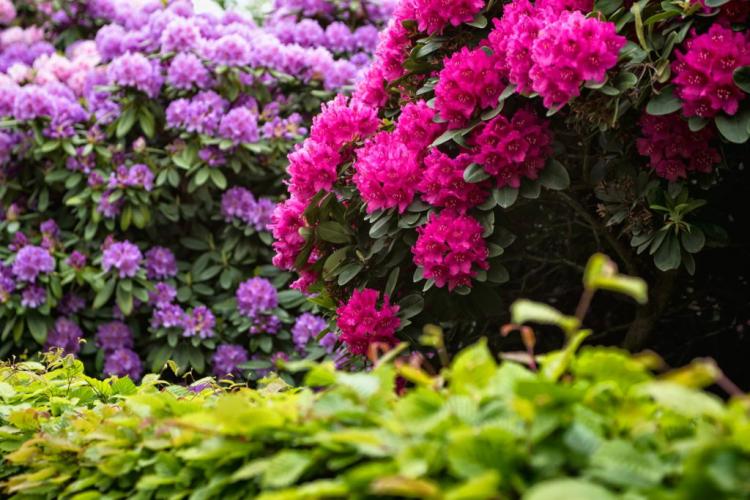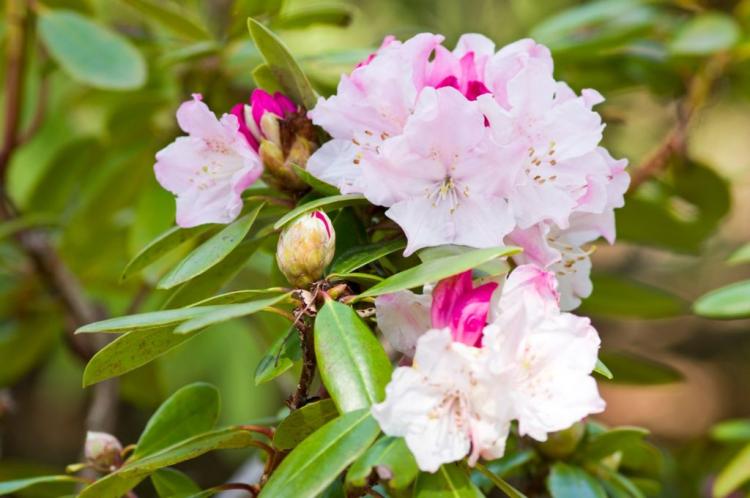Fertilizing Rhododendrons: The Right Fertilizer And Timing
For the rhododendron to fully develop its flowers, it needs the right nutrients. We give you tips on how to properly fertilize the rhododendron.
The rhododendron ( Rhododendron ) is a shrub genus from the heather family (Ericaceaea). The genus grows in nature primarily on acidic sites with a very permeable subsoil. And fertilization should also be adapted to these special conditions. We’ll tell you how you can create the perfect conditions in your home garden and which fertilizers are particularly suitable for your rhododendron.
For your rhododendron to have colorful flowers in summer and to keep its green foliage in winter despite snowfall, it needs a solid foundation of nutrients. This is the only way for the plant to gain enough strength to remain healthy and bloom for years in the same location. But when and how often is a rhododendron fertilized? And which fertilizer is best suited for this? So that your rhododendron shines particularly well, we answer all these important questions about fertilizing the popular shrubs.
When to fertilize rhododendrons?
Table of Contents
Most rhododendrons need to be fertilized once a year. An organic slow-release fertilizer such as our Gardender organic flower fertilizer, which releases its nutrients over a long period of time, is best suited for this. The best time for fertilization is spring between March and April. In the case of special weather conditions or unfavorable site conditions, the second fertilization in early summer can also make sense. Second fertilization should be considered especially after the rainy spring months. Then it may be that the nutrients have already been washed out and the soil is depleted.
Summary: When to fertilize rhododendrons?
- A stock fertilization per year with organic slow-release fertilizer is sufficient
- The ideal time is between March and April
- Second fertilization can be done in early summer
The right fertilizer for rhododendrons
Bog bed plants such as the rhododendron love humus soils with an acidic pH value between 5 and 6. In addition, they are mostly shallow roots, which is particularly advantageous on slightly calcareous soils. If you do not find the optimal conditions in your garden, you can help with targeted fertilization. You only need to do this in the upper layers of the soil through which the rhododendron has roots. In the following, we will tell you how and with what best to fertilize your rhododendron.

Organically fertilize rhododendrons
Organic fertilization brings – not only with the rhododendron – some advantages compared to the mineral variant. While it may not work in the short term, it is the more sustainable choice in the long run. The following applies to rhododendrons: You should use fertilizers that lower the pH value or those that at least does not affect the pH value. With its acidic properties, fertilization with compost is just as suitable for rhododendrons as horse manure, horn meal, or horn shavings.
If you do not have access to such natural fertilizers or want to do without animal components in the fertilizer, you can fall back on long-term fertilizers in organic quality. This includes our primarily organic Gardender organic flower fertilizer. This not only has the advantage of a long-lasting effect but is also much better for the soil life of your garden. It is also safe for children as well as pets and garden animals. Below we have put together a guide for you on how to optimally fertilize your rhododendron organically.

Organic long-term fertilization: application recommendation for rhododendrons
- Before planting, work 100 – 150 g / m² (well-filled 0.2-liter jar) of our Gardender organic flower fertilizer into the upper soil layer.
- Pour the soil and freshly inserted rhododendron well so that the granules can dissolve well.
- With maintenance fertilization in spring and summer, you should fertilize another 80 – 120 g / m² (0.2-liter jar) per plant.
- As the rhododendron grows in size, the fertilization can be gradually increased to around 400 grams of our Gardender organic flower fertilizer to maintain the vitality of the plant even in old age.
Fertilize rhododendrons with minerals
In many areas, mineral fertilization offers a good opportunity to quickly intervene in the nutrient supply of our garden plants. While mineral fertilizers are well suited for short-term intervention, they often do not work long-term as depot fertilizer. This means that blue grain and other mineral fertilizers usually have to be applied much more often than organic fertilizers. Because storage fertilization is not possible unless special and expensive depot fertilizers are used. It even harms your rhododendron, because over-fertilization leads to burns on the roots and can thus endanger the whole plant.
You might so like: Rhododendron Bloombux Repotting: Expert Tips
Therefore, it is better to take the pleasant variant for the plant and the environment and use an organic fertilizer. A mineral fertilizer can only be beneficial for rhododendrons that have been planted in a tub. Because due to the limited soil bed, nutrients cannot be stored well anyway. You should give these nutrient bombs in small doses from April to mid-June. When fertilizing your rhododendron, 70 grams per square meter and season are recommended.
Alternatively, you can dissolve five grams of blue grain per ten liters of water and use it to fertilize your potted rhododendron once a week. Mineral fertilizers should always be given sufficient water so that the nutrients can be absorbed and burns are avoided. Too extensive watering immediately after fertilization can, however, also wash the nutrients out of the root area of the shallow-rooted rhododendron and make them inaccessible.

Fertilize the rhododendron with coffee grounds
Coffee grounds are produced in almost every household daily. Few people know, however, that after watering it can also be used to fertilize plants such as rhododendrons. The slightly acidic properties of coffee grounds can be used to lower the soil pH. In addition, the coffee grounds provide useful nutrients in small quantities, which are released over a longer period of time when incorporated superficially. When fertilizing with coffee grounds, proceed as follows:
- Dry the coffee grounds
- Scatter coffee grounds in the root area
- Work lightly into the upper layer of soil
- Pour well
Alternatively, you can also add the coffee grounds directly to the watering water. With bed rhododendrons, you can use coffee grounds up to four times a year. In pot culture, it is best to fertilize once in April and mid-June.
You might so like:






